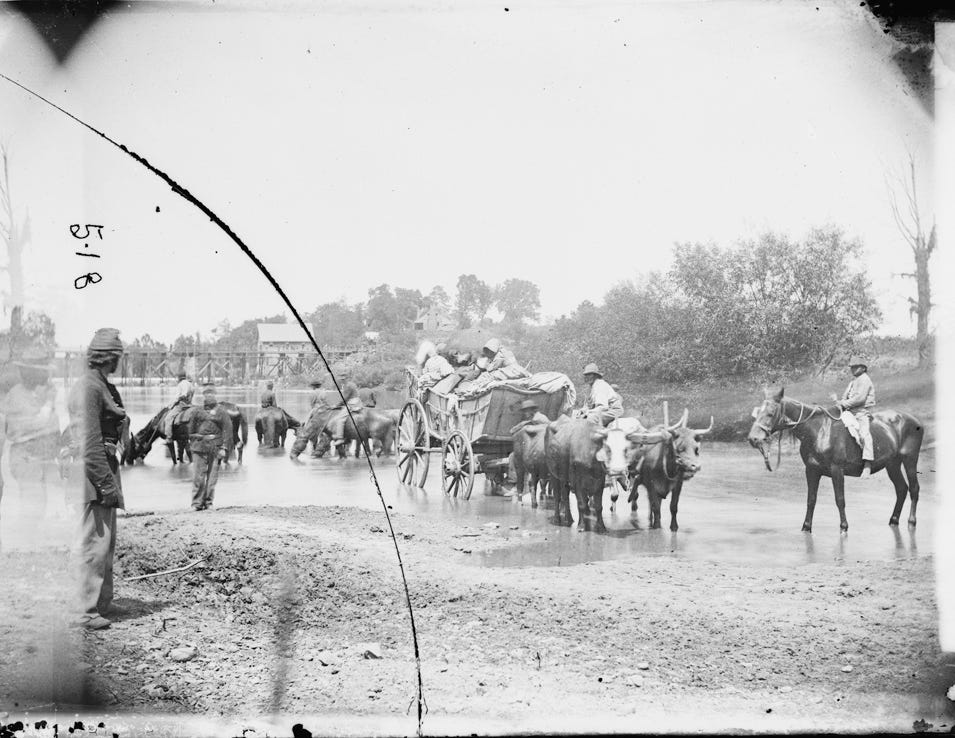What a Photograph Can Tell Us About Robert Gould Shaw and Slavery
Last night I had the pleasure of speaking to the Joshua L. Chamberlain Civil War Roundtable in Brunswick, Maine. My subject was Robert Gould Shaw’s nineteen months with the 2nd Massachusetts Regiment before taking command of the 54th Massachusetts—the first all black regiment raised in the North. I focused on a number of themes from this period and used Shaw’s own letters to raise questions and provide some insight into how I am interpreting this stage of his military career.
I talked quite a bit about Shaw and slavery. It is during this period (June—December 1862) that his understanding of slavery and emancipation came into sharp view. Like many Union soldiers and white northerners generally, Shaw had very little contact with African Americans before the war. Even his parents, who were committed abolitionists, had very little contact.
But Shaw’s time in Virginia, especially in the Shenandoah Valley in 1862, placed him in close proximity to thousands of fugitive slaves or freedom seekers. I used both his letters and images to help illustrate this point.
There is no better primary source than this photograph, which was taken some time in July-August 1862 along the Rappahannock River in central Virginia.
It is a striking image of enslaved people seeking freedom at a key moment in the war. Lincoln has decided to strike out decisively against slavery with an emancipation proclamation that is just waiting for a clear military victory. Robert E. Lee’s Army of Northern Virginia is marching north after having successfully defended the Confederate capital of Richmond against a much larger federal force.
And in the middle of all of this, thousands of African Americans are taking matters into their own hands by “freeing themselves.” This self-emancipation theory has long been popular among historians and serves as a corrective to the traditional passive narrative of slaves having been freed by Lincoln or the United States army.
The photograph suggests that both views have merit. The location of the Union army was one of the most important factors in convincing enslaved people to strike out on their own. One of the things that makes this photograph such a rich source with which to interpret is that it emphasizes movement and change over time. It raises questions about how Union soldiers and enslaved people responded to one another.
For Shaw and others in his regiment their contact with enslaved people proved to be decisive in all sorts of ways. It introduced them for the first time to the horrors of slavery, which many had only read about. Their conversations challenged racial assumptions that were deeply embedded, even in places like New England.
Shaw wrote the following on March 28, 1862:
We were lying in the sun on the side of a hill & 4 or 5 negroes who had come up in their Sunday clothes to see the soldiers passed along. Among them was a white man with two little curly headed boys—all three as handsome people as you would find. Harry said, “That’s a white slave.” so we called to him & asked what his trade was. “Nothing Sir,” said he, “but working in the field under another man.” I asked him if his Father had lived on the same plantation that he did, for he said he was born there. I guessed what the answer would be. And he said his Master was his Father & that it had often been a bitter pill to swallow when he had been badly treated by him to think that it was so. He said it was, “like having a forked stick in him.”
A number of Shaw’s friends in the regiment also commented on this scene. The multiple accounts suggests that it challenged how they thought about the institution of slavery as well as the humanity of those enslaved.
Shaw’s interactions with African Americans during the war reinforced the anti-slavery beliefs he had learned from his parents early on in life, but these experiences did not transform him into a moral crusader. Rather, Shaw took a pragmatic view of what should be done regarding slavery that, in many ways, overlapped with Lincoln’s own views. Decisions should be made to advance the military goals of commanders on the ground and, ultimately, the preservation of the Union.
The lack of discipline in the United States army was constantly on Shaw’s mind, but as far as Shaw was concerned, if the Irish could be sufficiently trained for military duty, African Americans could be as well. This is what his time in Virginia confirmed and this is what the image above helps us to begin to understand.
I emphasize this to push back against our public memory of Shaw as a moral crusader—a view that is reinforced in the movie Glory and also in Augustus Saint-Gaudens’s beautiful relief sculpture on the Boston Common.
Historical figures rarely, if ever, conform to Hollywood movies or the monuments and memorials in our parks and other public spaces. History is much more complicated and messier.




